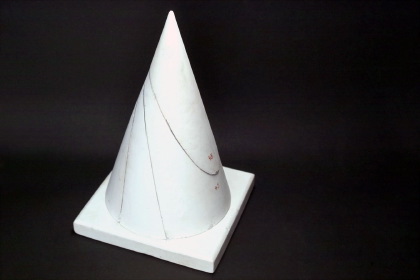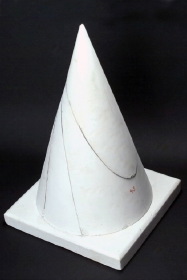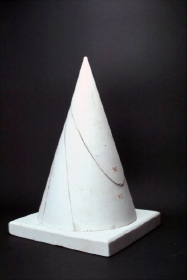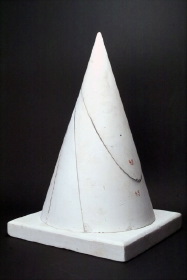Circular cone with all types of conic sections
Model 45
Description
Circular cone with all types of conic sections. 4 parts. Gypsum.
Additions
A circular cone emerges from rotating a line around an axis that intersects the line non-perpendicularly.
Consider a circular cone and a plane that does not pass through the tip of the cone. The intersection between both objects is called a non-degenerate conic section, the emerging objects are intrinsically related.
They are characterized by their eccentricity $varepsilon$ which is a measure of how much the conic section deviates from being a circle ($varepsilon = 0$):
- ellipse with $0 < \varepsilon < 1$,
- parabola with $\varepsilon = 1$,
- hyperbola with $\varepsilon > 1$.
If the plane passes through the tip of the cone or if the cone gets degenerated to a cylinder, one obtains the degenerated conic sections:
- point,
- two intersecting lines,
- line,
- empty set,
- two parallel lines.
The model has been published in the year 1800 as a part of series VI by the company Martin Schilling. In the year 1903, the model cost 22 Goldmark, eight years later one had to pay 25 Goldmark for it. The original version was built at the mathematical institute of the royal technical university in Munich and was commissioned by Alexander Wilhelm von Brill.
Showcase of this model is Case number 11
References
Schilling, Martin(Hrg.): Catalog mathematischer Modelle, Leipzig(Verlag von Martin Schilling) 1911, 7.Auflage. .
Hilbert, D.; Cohn-Vossen(1932). Anschauliche Geometrie, Springer-Verlag, Berlin. Online version





